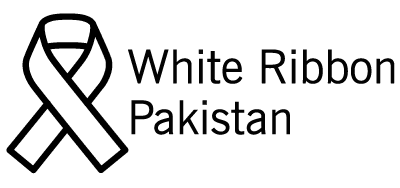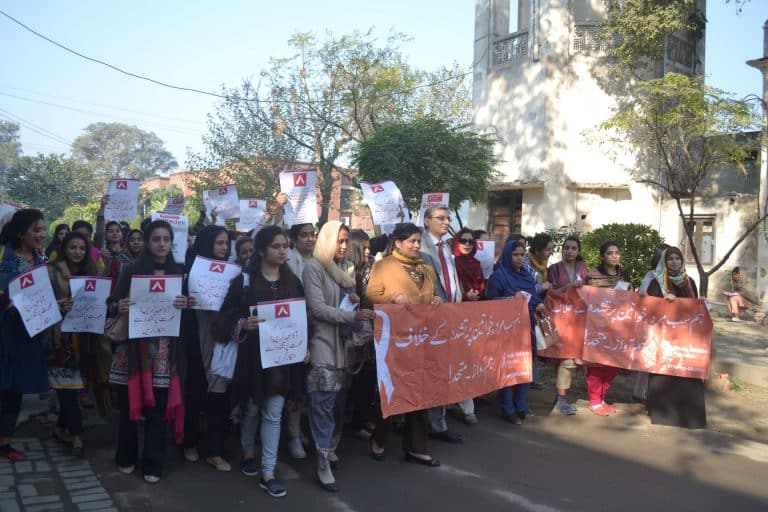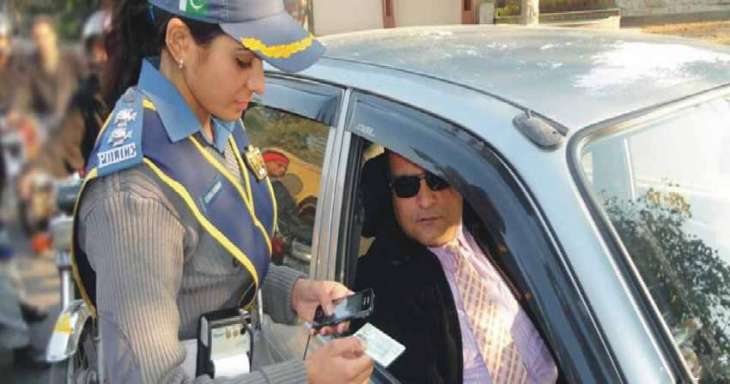
by admin | Oct 25, 2022 | Uncategorized
The City Traffic Police Lahore, in collaboration with the White Ribbon Campaign Pakistan, observed a full-day awareness campaign on Saturday about prevention of violence against women.
LAHORE, (UrduPoint / Pakistan Point News – 8th Dec, 2018 ) :The City Traffic Police Lahore, in collaboration with the White Ribbon Campaign Pakistan, observed a full-day awareness campaign on Saturday about prevention of violence against women.
The joint camp under the supervision of Chief Traffic Officer Capt (R) Liaqat Malik and Chief Executive Office White Ribbon Omer Aftab was organised at Faisal Chowk, here.
This activity was part of White Ribbon’s 16 Days of Activism, which started from Nov 25 and would continue till International Day for Human Rights, falling on Dec 10.
All 2,600 traffic personnel of Lahore will wear white ribbons till Dec 10.
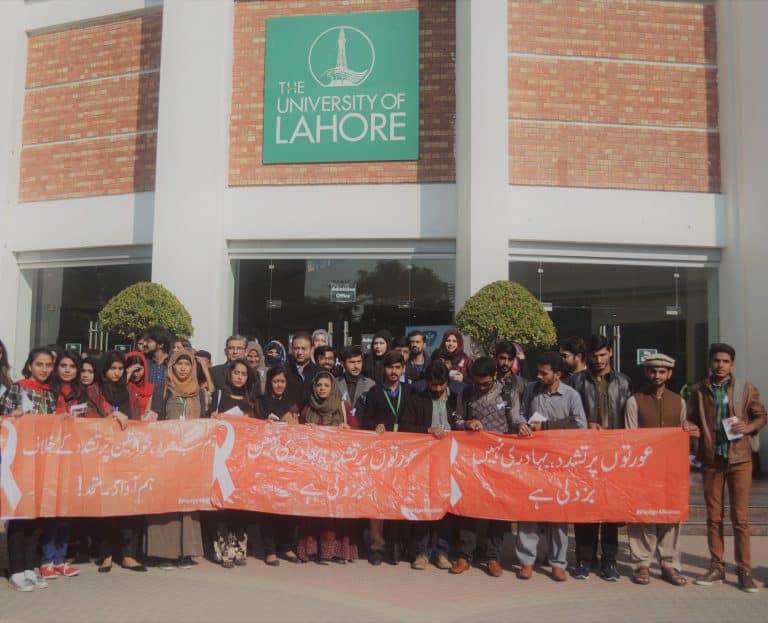
by admin | Oct 25, 2022 | Uncategorized
By White Ribbon Pakistan
University Of Lahore Shows Solidarity with White Ribbon by Organizing a Seminar and a Walk.
Thousands of Students Pledge to Help Eradicating Violence Against Women.
#iPledge
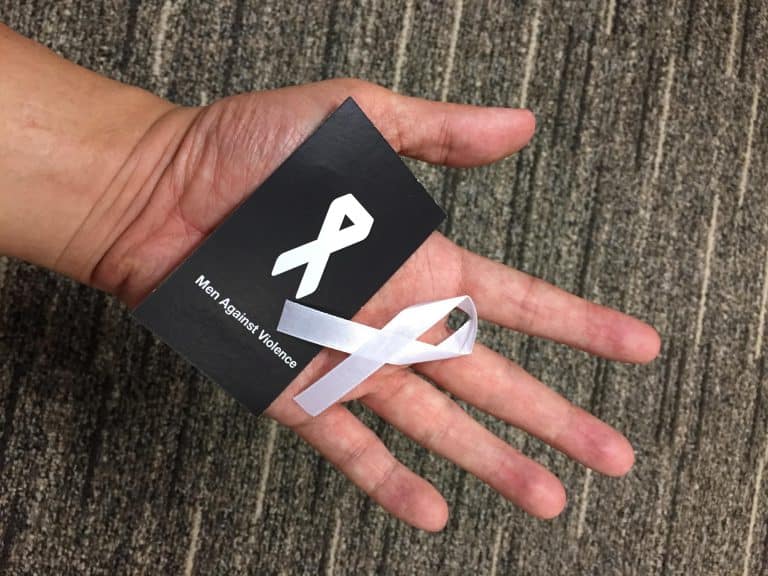
by admin | Oct 25, 2022 | Uncategorized
The question I have been asked at many forums is what solution is there to combat violence against women in Pakistan. I have always been talking about many solutions like strong legislative measures, improved service delivery and infrastructure, increased awareness amongst women, more women in leadership roles and so on.
The truth is, in recent years Pakistan has taken a lot of similar interventions both at the federal and provincial levels. But still the incidence of violence against women (VAW) is increasing with every passing day in this country. This situation is alarming. But not more than the fact that this violence is somehow accepted as we don’t see clear condemnation of such acts from many tiers of the society.
After a decade of my work as a women’s rights activist, I am of the view that the only and long lasting solution is the engagement of men towards gender equality.
In a patriarchal society like ours what could be more pleasing if a perpetrator turns himself into a protector of women’s rights. In a patriarchal system men usually enjoy decision making power including control over economic resources, education, health care and mobility of women of his family. In this situation, contrary to the feminist approach, engagement of men in eradication of VAW is more close to logic and thus, becoming the popular phenomenon.
In Pakistan, White Ribbon initiative is pioneer in this field with a different approach to counter the issue of violence against women. White Ribbon is of the view that generally men do not have the tendency of being violent, rather it is social pressure based on perception of societal standards that evokes them to do so. To help men with this situation we have identified ways to engage men for eradication of violence.
These are as follows:
Let’s talk: One of our major problems is that we do not talk. No one is a mind-reader. If we talk with our partners, we can understand each other’s wishes, thoughts, and desires. Consent should never be assumed.
Act: Rather than watch abuse happen, we can take a more proactive role and become empowered bystanders. This means standing up, speaking out, intervening in potentially harmful situations, or alerting others for assistance. There is always something we can do.
Choose words thoughtfully: We must understand the impact of our language and the words that we use. Using vulgar words to describe women makes it easy for the society to view women as inferior.
Talk with men: We can engage in dialogue with other men about how domestic violence has impacted their lives. We can explore feelings and the costs of being regarded as potential perpetrators of violence, while learning how to best support male-identifying survivors. Talking with other men will also allow a space to discuss ideas on how to challenge and stand up against domestic violence.
Lead by example: Never disregard, excuse, commit, or remain silent about any violence, and particularly that against women and girls. We can be role models for other men and boys in our communities. We can teach our children to be respectful and never abusive towards women. We can be good fathers and equal partners in our relationships.
Organise: We need to engage men in an organised way, such as through affiliation with a movement to keep one energetic and loyal to the cause.
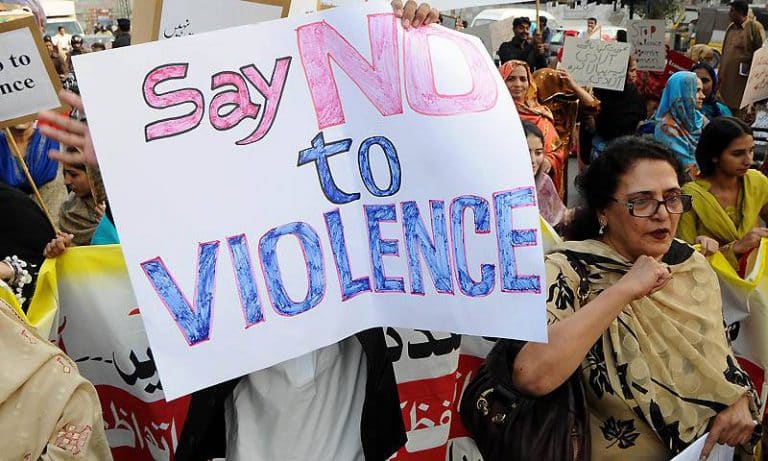
by admin | Oct 25, 2022 | Uncategorized
Violence against women (VAW), also known as gender-based violence, is collectively the violent acts that are primarily committed against women. The United Nations defines violence against women as “any act of gender-based violence that results in, or is likely to result in, physical, sexual or mental harm or suffering to women, including threats of such acts, coercion or arbitrary deprivation of liberty, whether occurring in public or in private life.”
According to Pakistan Demographic and Health Survey 2014, one in every five women in Pakistan is subjected to physical violence, a third of all married women go through it, as well. Over 40 per cent of women suffer spousal abuse at some point. On the other hand, in terms of the Global Gender Gap, Pakistan stands 143 in economic participation and opportunity, 135 in educational attainment, 125 in health and survival and 87 in political empowerment. In 2015 it was recorded that 59% of violence experienced is domestic violence, 14% through being forced into marriages, 5% rapes, 2% inheritance deprivation and 18% other kinds of violence.
Gender inequality is the root cause of violence against women, influenced by the historical and structural power imbalance between women and men which exist in varying degrees. The reason behind the above quoted “cruel stats” in Pakistan is century’s long deep rooted patriarchal system that controls women at three levels – individual, societal and structural.
Whilst individuals suppress the women, the society has norms and traditions which tolerate violence against women. Lack of services and poor legislation are among several kinds of discrimination towards women being perpetuated at the structural level.
Unrealistic norms and values, misinterpretation of religion, false and double standards backed by control of men on recourse and decision power make the situation worst. These factors force women to be dependent on her male counterpart for her economic needs, mobility, and health and education rights.
Although this is a global issue, in our society women are faced with some of the most extreme kinds of violence. In recent years we have witnessed many cases of so called “honor” killing, not only in rural but in urban areas as well. Whereas despite the improvement in laws, ratio of crimes like acid throwing, burning alive, early or forced marriages, kidnapping and rape have also increased. Moreover, bullying, character assassination, workplace harassment and deprivation of due rights are the challenges that Pakistani working women have to deal with along with her regular work tasks.
To eliminate VAW and to make the society more cooperative for half of the population, many efforts have been done in recent past. But a lot of work is still needed, both from the society and the state. Studies have shown that there are some protective factors that can reduce the risk of women and girls of being a victim of VAW. These factors include completion of at least secondary education, women’s economic autonomy and access to skills and trainings, quality response services (judicial, security/protection, social and medical) with trained service providers, and availability of safe spaces or shelters.
To curb this situation White Ribbon Pakistan is working on a unique model of men engagement to end violence against women. For this we are running a nationwide advocacy and awareness campaign calling men to join this movement. We believe that to bring a paradigm sift in the situation it is important to redefine the existing narrative on the status of women in society.

